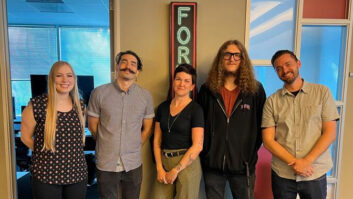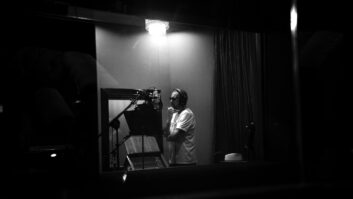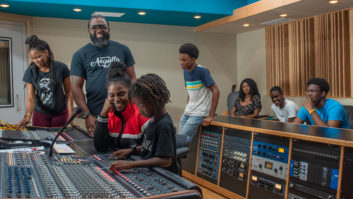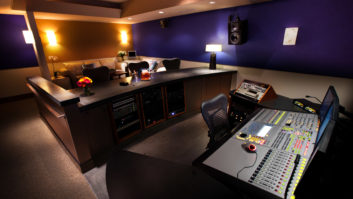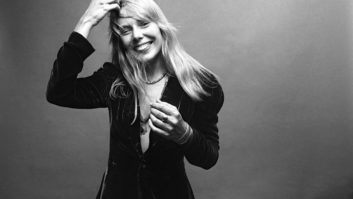There is a strong sense of tradition running through Sony Pictures Entertainment in Culver City, Calif. A rainbow greets visitors at the Madison Gate, as a lasting tribute to The Wizard of Oz from the days when MGM reigned supreme. The Thalberg building to the left recalls, at least architecturally, that Golden Age when executives smoked big cigars while making big deals, riding up to the big corner suite in a private elevator.
Straight ahead, to the left and right, shooting stages, sound stages and crafts facilities line Main Street for blocks and blocks. People hurry by in golf carts. The Commissary is packed. Guided public tours wind their way daily through the rich and vibrant history of stars and showbiz. The place just screams “Hollywood!” It’s a vision of moviemaking that the entire world shares, and, for the most part, it’s entirely real. Tradition is important.
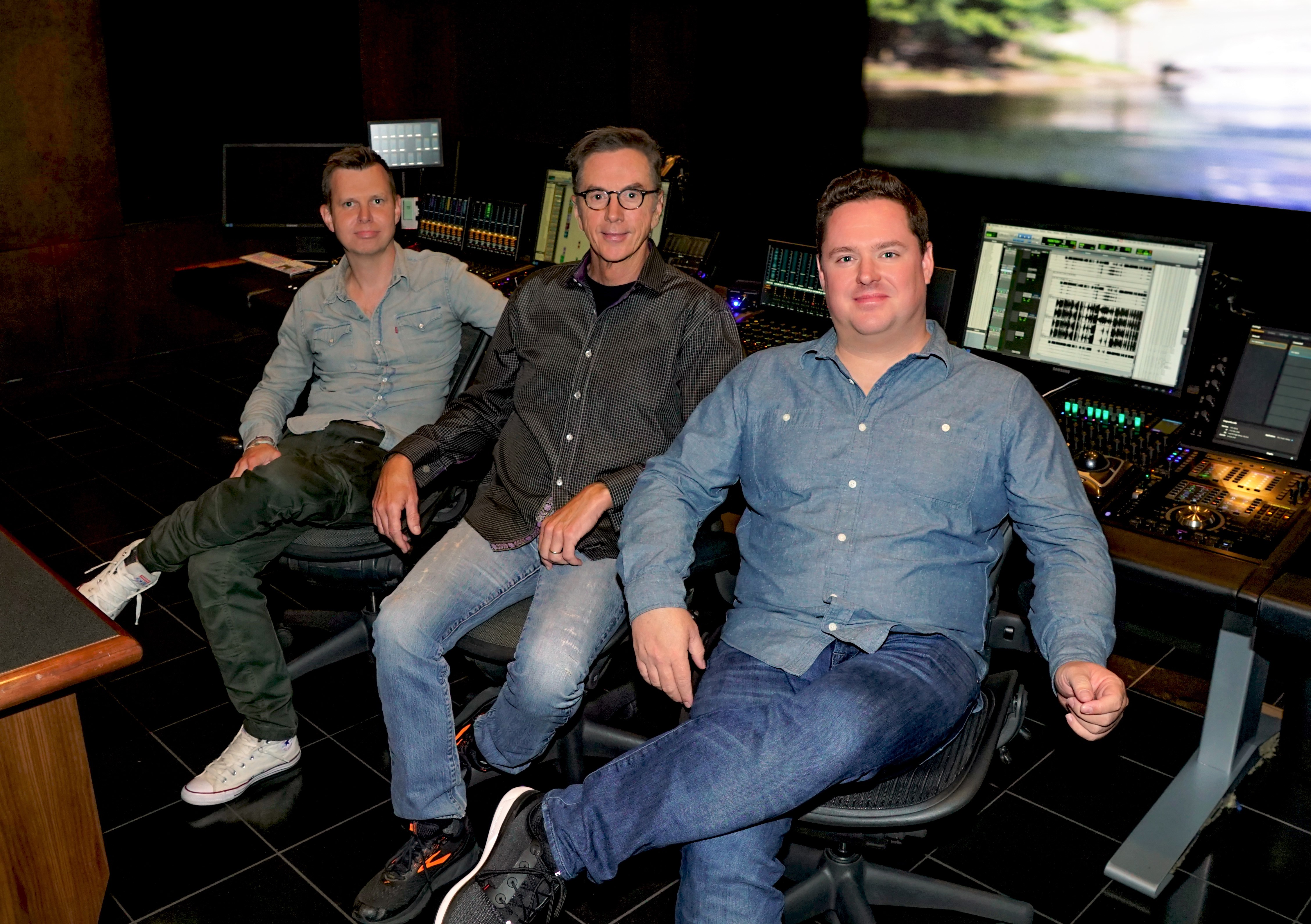
But so is staying current, and behind the scenes there is a whole other story going on at the Sony Pictures lot, one that involves technology and people and a new way of working. Nowhere is this more apparent than in post-production audio for film and television, where over the past five years Tommy McCarthy, now executive VP of post-production facilities, has led the charge to adapt to shrinking post-audio budgets and the rapid changes in technology and workflow on the one hand, along with the rise of immersive audio and multiple new formats for distribution on the other.
That’s not easy for a small, nimble, ground-up facility. It’s even more difficult at a huge multinational. And yet by all accounts Sony Pictures Post Production Services is thriving, with the flagship Cary Grant Theater—recently upgraded with Dolby Atmos capability—booked solid for the next two years. It’s pretty much the same for the rest of the re-recording stages, both film and television. The demand is there.
“I’ve now been with Sony Pictures for 28 years, and about five years ago when I first started running the audio post facilities, we had 10 mix stages and were wondering whether we needed all 10,” McCarthy says. “We were a very traditional facility, with mixing and editorial separate. First we started migrating to the Avid S6 and other technologies and knocked down the walls between editorial and mixing. Then we knocked down the walls between TV stages and feature stages.
“Then once we changed our technology and philosophy and became the leading force on the west side, we added four mix stages,” he continues. “Right now we have 14 mix stages, and within the next two years 11 of them will be outfitted for Dolby Atmos, with five of those set up for IMAX delivery, as well. The streaming networks out there are producing so much content that I don’t know how there are enough facilities and talent in town to handle the work that comes through the pipe. It’s astronomical how much is being produced today, and believe me, we’re all thankful.”
A New Way to Work
It’s hard to overstate the impact of the technological disruption in audio post-production for film and television over the past decade. Few could have foretold how rapidly immersive audio was accepted, both out in public and at home. The rise of streaming services certainly helped fuel that change with a demand for deliverables, while simultaneously creating a boom in content. Finally, tighter budgets have led to smaller crews and shorter schedules. It developed into a perfect storm, one that demanded a reaction.
McCarthy and his team responded in a couple of ways. First, as mentioned, they broke down the barriers between sound editorial and mixing, a delineation long established in Hollywood but no longer viable. Many others had embraced the change; when Sony Pictures Studios changed, they changed quickly, starting with the William Holden Theater five years ago, followed by the Kim Novak Theater and others, then ramping up significantly over the past 18 months with the addition of the all-new Theaters 1 and 3—as combination mixing/sound design suites—and a massive Dolby Atmos upgrade to the Cary Grant Theater, pictured on this month’s cover.
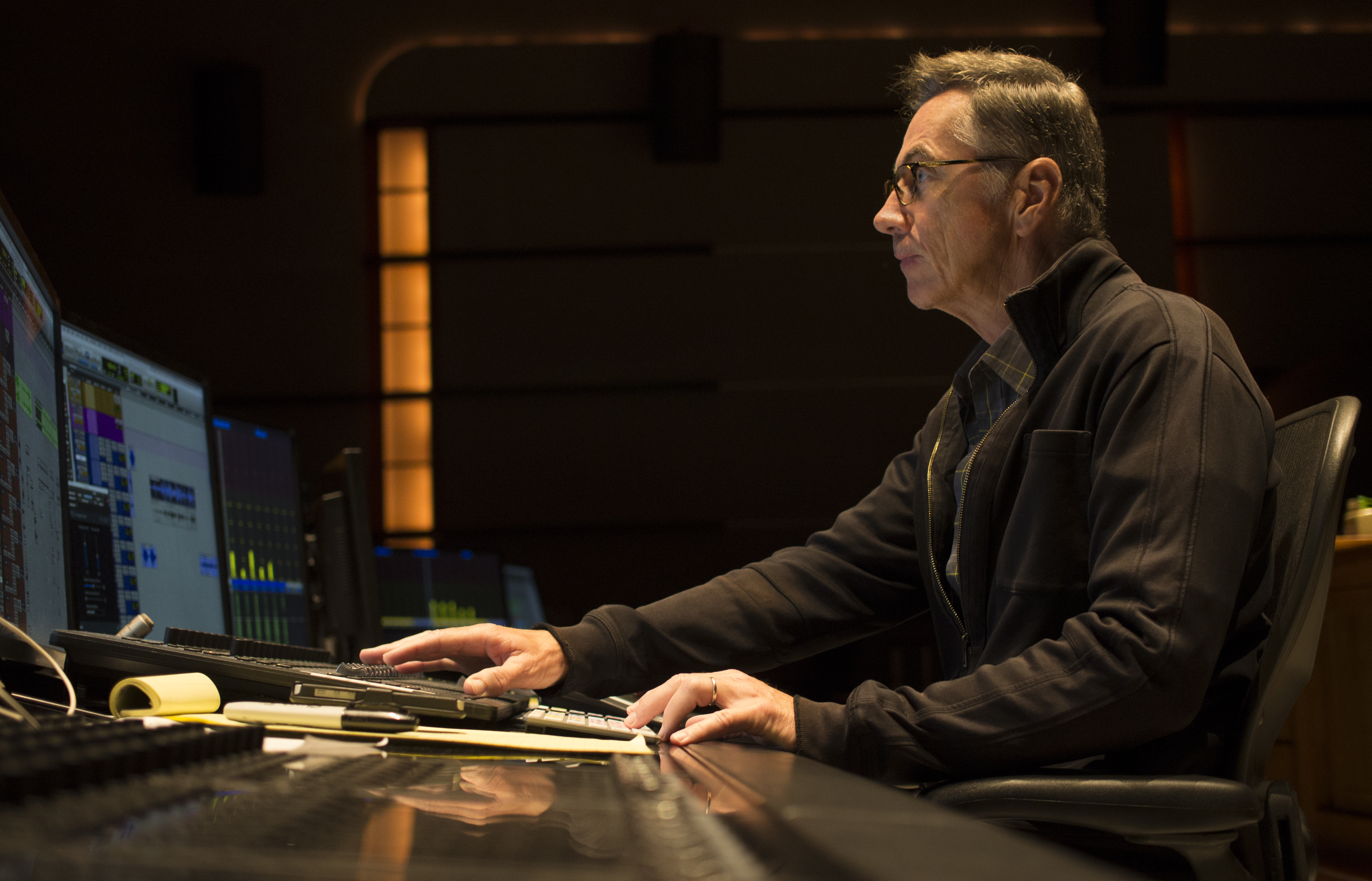
The Cary Grant Theater is something of an anachronism in today’s world. It’s huge, containing the largest Avid S6 in the world, and the upgrade to Dolby Atmos required 42 more JBL speakers, with all associated amplification. It wasn’t cheap. Who does that today, when the industrywide trend is toward flexible, mid-size immersive rooms? Sony Pictures did. And when they made the decision, they had five weeks to complete it. Two pictures were clamoring to get in. Now there are two years of bookings.
“The industry trend is that they seem to be closing big rooms, with or without Atmos, and we’re revamping ours,” says Lane Burch, head of engineering and project manager for the recent revamps of the Grant, the Jimmy Stewart and Theaters 1 and 3. “The main build-out for the room was mostly about putting in a full dance floor of scaffolding and applying adaptive bracketing for the new speakers. Westlake was the contractor for the Grant, Modern Interiors peeled back the fabric, and Streamline Systems Design did the rigging and put all the speakers up. The whole project was about five weeks, and the next day a film came in.
“We also did some upgrades to a four-way JBL speaker system behind the screen with the D2 compression drivers,” Burch continues, “and we changed to dual-18 subwoofers to modernize it a bit and give it an industry feel.”
But before upgrading the Cary Grant, Burch and his engineering team cut their teeth on Theater 1, one of three former color correction suites McCarthy picked up when Deluxe left the main post-production audio building three years prior. The need for a flexible, midsize immersive room, one that could pull double duty as a sound design suite for the newly arrived talent or serve as a mix suite for episodic television or feature films that didn’t require a big stage. Theater 1, the first to be built, was designed with supervising sound editor/sound designer/re-recording engineer Will Files in mind.
“The plan going to it was to build a room equally suited to mixing and sound design,” Files says. “That’s necessary today, and these midsize rooms are the future. I don’t want to see the big rooms go away of course, because they need to be there. But you can do a lot of the prep work in these rooms, and there’s something about the intimacy that is good for the creative process. It still sounds like a high-quality dubbing stage, but it has a more cozy, intimate vibe for the client. The thing that’s so good about the Atmos system is that it’s designed to be scalable to size and dimension—equally suited to working in smaller spaces while translating to the big stage. But my favorite thing about the room is the sound of it. Lane Burch and the engineers here at Sony Pictures really put the effort into it.”
Theater 3 followed a year later, completed this past May, after the upgrade to the Cary Grant, with sound designer/re-recording mixer Julian Slater in mind. It shares an identical footprint to Theater 1, and again, Audio Intervisual Design (AID) supplied the JBL speakers and full B-chain. And again, Streamline Systems Design provided integration, with Westlake as contractor. As with Files in Theater 1, it’s not “his” room, though he usually gets dibs when a mix isn’t booked. It’s all part of the philosophy of “no set crews, no set stages.” The model is working; the talent has bought in, often working comfortably in multiple rooms throughout any one project.
Talent and Culture
While Tommy McCarthy has provided the drive and vision for the transformation of audio post at Sony Pictures, any discussion of the recent drive to attract talent begins with Kevin O’Connell. From 1993 to 2008, O’Connell mixed at Sony, under contract, primarily in the Cary Grant Theater and most often on big movies, the tentpole pictures and the action-fueled blockbusters. In 2008 he went independent and discovered the advantages of flexibility on the stage and mixing in the box. In 2014 he returned, right at the start of the changes taking place on the lot.
“When I came back to Sony Pictures, I came back from the independent world, where you need to work on every console, every surface and you need to be mixing in the box,” says O’Connell. “I think Tommy wasn’t sure whether I was stuck in a traditional way of working—I’ve been doing this nearly 40 years—so I told him that I was all about the new technology. He was happy to hear that, and since then we have embraced the new workflow together.
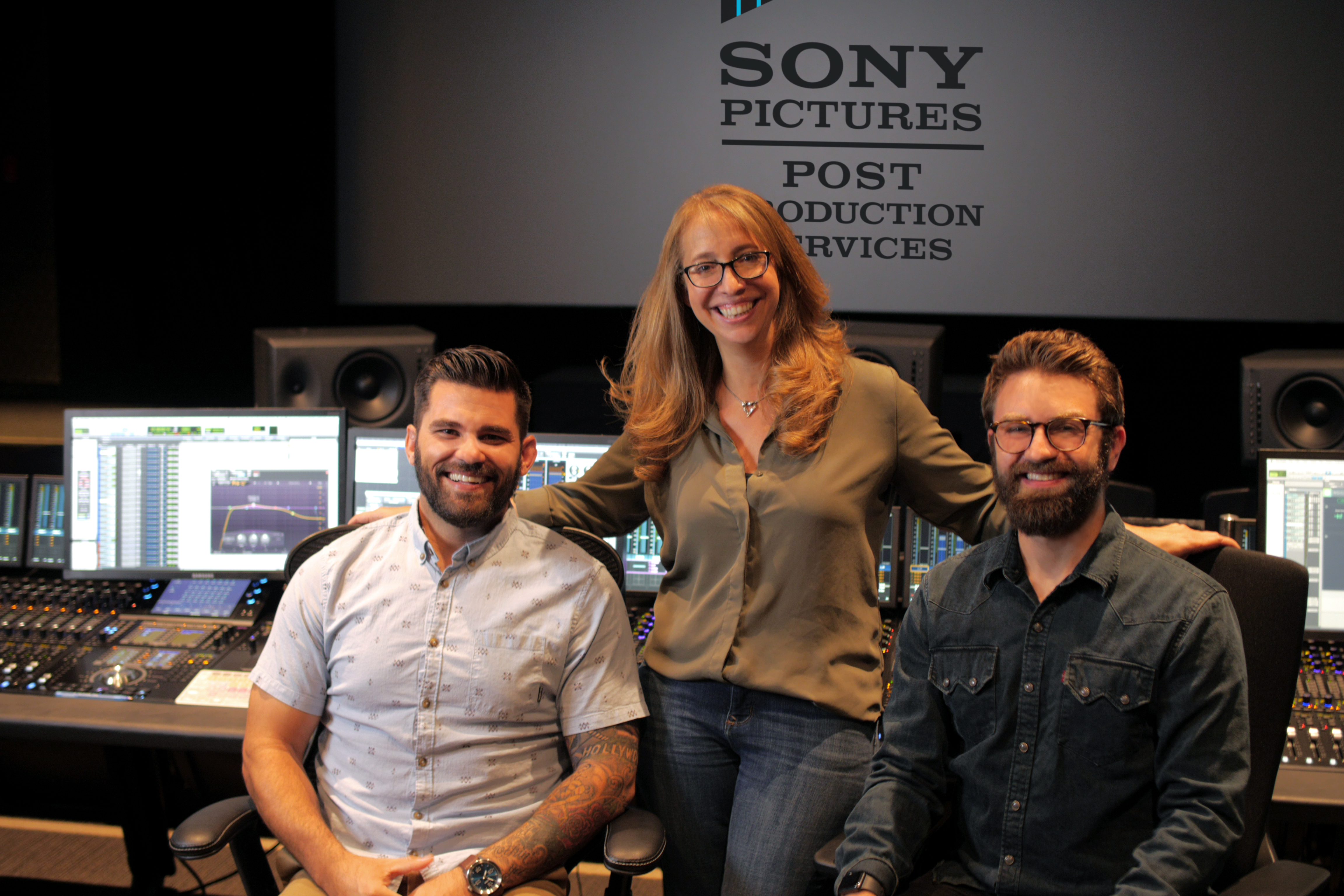
“For a lot of films we do, you’re predubbing in one studio, temp dubbing in another, finaling in another, doing the M&E and Chinese version in another, and they all have to be in Atmos,” he continues. “You have to have that flexibility within the rooms and within the facility. That’s one of the great ways Tommy is expanding the facility. We can do anything.”
Since returning in 2014, O’Connell has led the effort to both attract new editors and mixers and develop talent in-house, pulling from the pool of mix techs, whose jobs have moved from the machine room to the Pro Tools station on the dub stage. Files was first approached by McCarthy about four years ago, with the idea of building Theater 1 for his use. A year went by, projects had been committed, then O’Connell called with encouragement. McCarthy called again. Files found a home.
Likewise, Julian Slater went through a courtship. He had come to L.A. from London about six years ago, first mixing at Sony Pictures on Columbia Pictures’ The Brothers Grimsby about four years ago. When he flew in from London to supervise, sound design and mix TriStar Pictures’ Baby Driver, he was associated with Technicolor. By the time he returned to London, he had made a commitment to Sony Pictures. The following Monday, he was working on Jumanji: Welcome to the Jungle.
“I think there is definitely a renaissance going on here,” Slater says. “A lot of movies going on, a lot of great talent across the board—and not just mixers or sound design, but the mix techs and the engineers and the administration. Kim Jimenez in booking and operations. And without sounding cliché, it’s been great to work with Kevin. Nothing makes me happier than sitting in the Cary Grant and mixing with Kevin. When I packed my bags six years ago to move to L.A., that’s exactly what I envisioned. Kevin has been very astute, and he understood earlier than a lot of his peers how things are shifting and how ‘important’ it is for the re-recording mixer to be part of the process early on.”
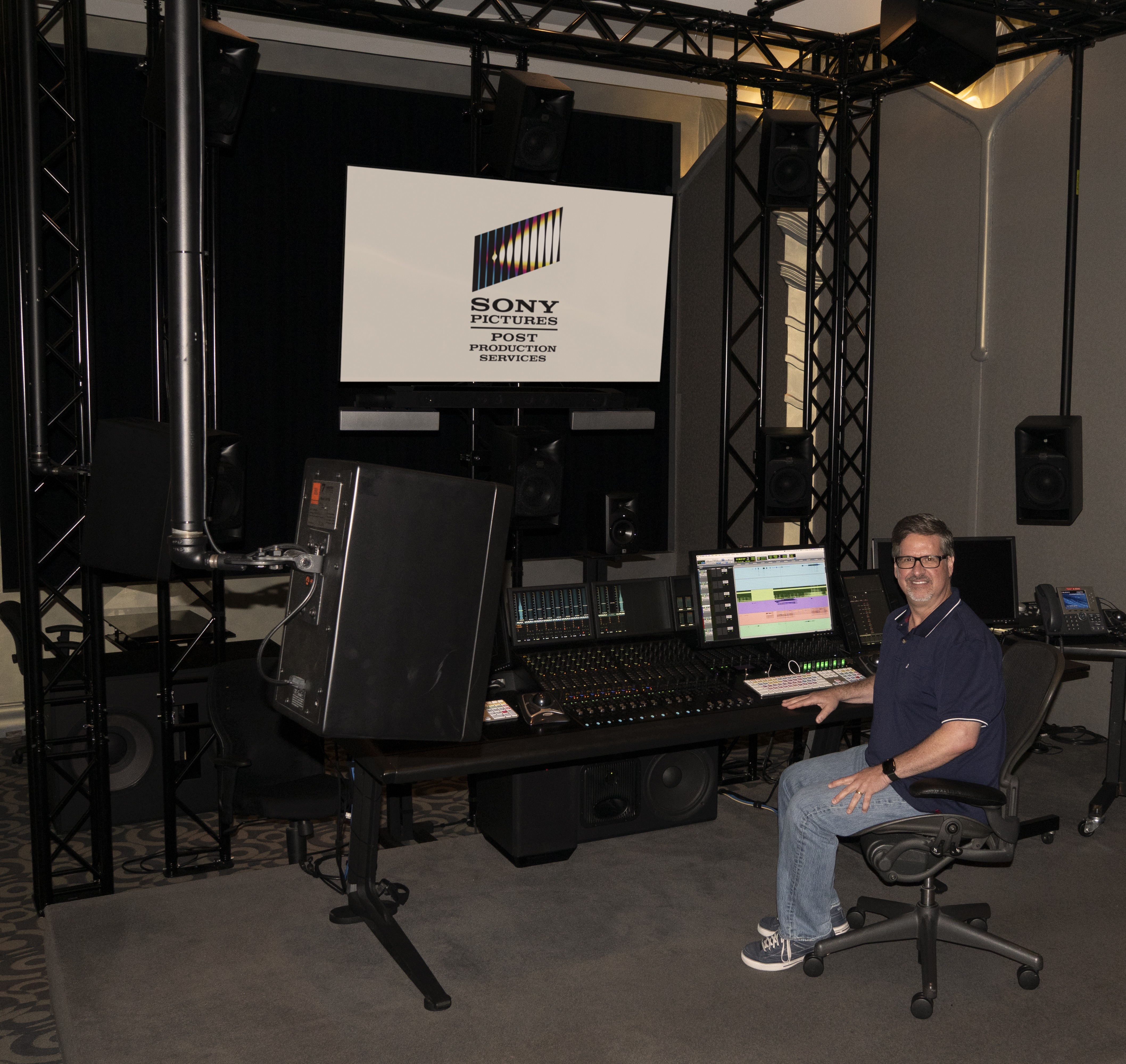
Tony Lamberti, a stellar sound designer/mixer, has a similar story, as do Geoffrey Rubay, Ryan Collins, Nick Offord, Becky Sullivan, Mandell Winter, Steven Ticknor, Andrew DeCristofaro and many others. Except for O’Connell, who was recently named Director of Creative Services, none of them are employees or under lucrative contracts. Those days are gone in Hollywood. They have simply committed to Sony Pictures as a home base, and they are happy to be there.
“Tommy was the best thing that could have happened to this department,” O’Connell says. “He was handed the reins during a huge transitional period and he’s done a fantastic job of steering the facility in the right direction. He’s very big on having great talent, the right talent, and the best technology, but he’s more focused on the culture. I’ve always believed that when you can surround yourself with great people, it makes the whole facility stronger. My goal in coming back was to bring back as many talented people as we can who want to embrace the culture. It helps that we have one boss to report to and that’s Tommy McCarthy.”
“I don’t believe in overly large editorial or mix teams,” McCarthy adds. “I want extremely talented people who have connections with filmmakers. But more important to me, and what I’ve really been working on these past five years, is the culture of this facility. Starting with the valet parker! That’s the filmmaker’s first impression. Then in administration we have Kim Jimenez, Diana Rogers, Kevin Wahrman, Betsy Solorzano and Sumiko Braun—they all work closely with our talent. And they all are part of the experience.
“Then when we get to the stages, to me it’s more important to have talent on the mix and editorial sides who work well together, where everyone is aware of what’s going on throughout the facility, with no politics involved. When you have that type of environment, you have a place that people are happy to come to. We all have enough stress on the creative side, so building a positive, collaborative culture can help relieve that stress. We want the job to be fun. We want to be the best in town, sure, but we also want to have a good time while we’re doing that.”
